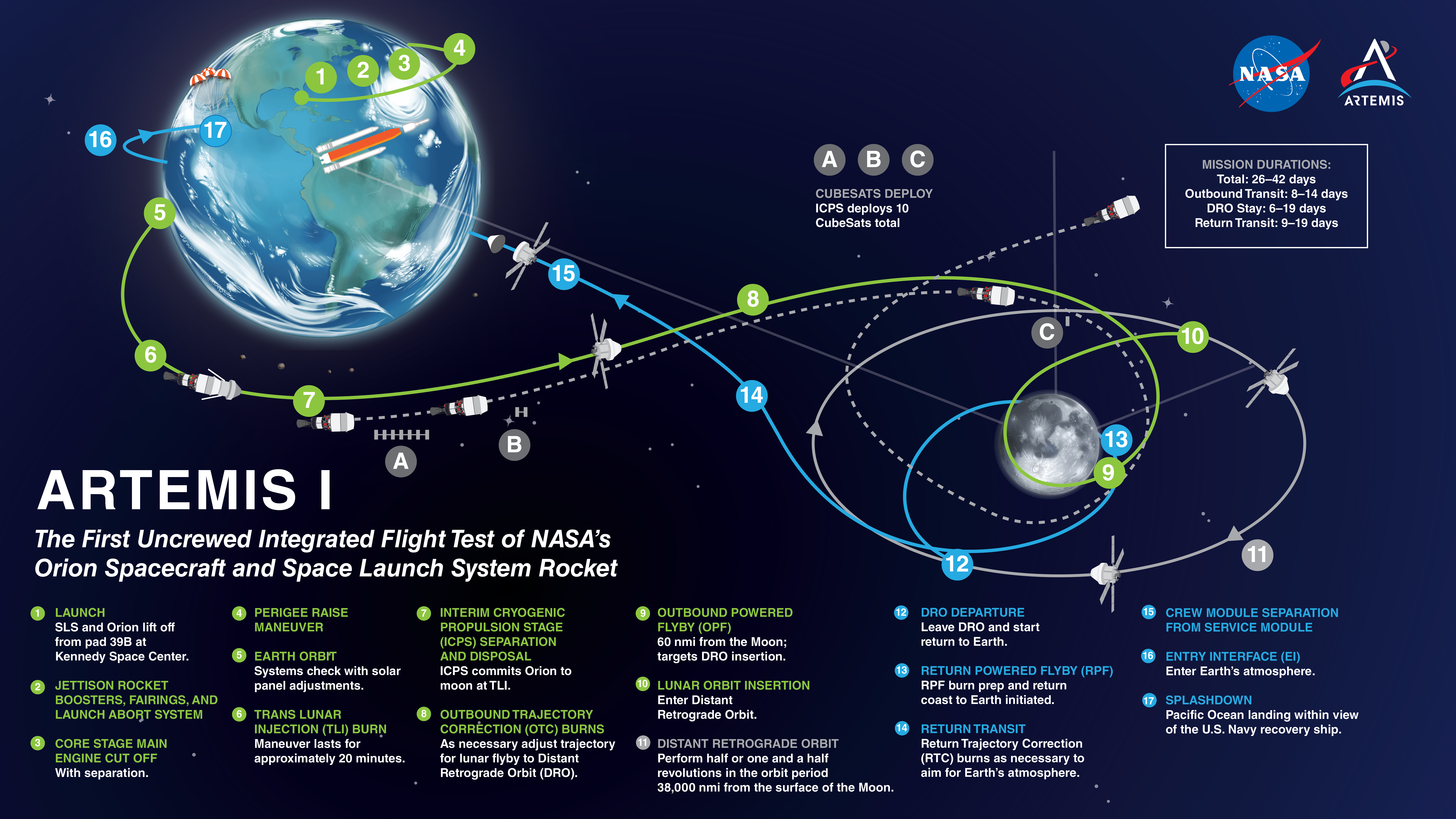Fifty-three years after humans first walked on the moon, NASA is kicking off its ambitious Artemis program to return us there, starting with an uncrewed launch of a massive new rocket on Monday.
The Artemis I mission scheduled Monday morning will see the first flight of the Space Launch System (SLS) rocket and the second flight of the Orion capsule. It’s been a long road to the launch pad.
SLS’s origin story stretches all the way back to 2010, when Congress directed NASA to develop a rocket as a follow-on to the space shuttle. If the rocket’s appearance looks familiar — particularly the two solid boosters that flank the central liquid hydrogen tank — that’s because it borrows much of its technology from the shuttle. But even with the emergence of private launch companies like SpaceX, which has perfected the art of rocket reusability, NASA, Congress and the defense contractors they hired persisted in developing SLS.
Throughout, the project has been mired in cost overruns and technical delays. In total, SLS has cost more than $20 billion — and because no part of the rocket is reusable, the costs associated with the project are far from over.
Yet, Monday’s launch still marks the beginning of what could be the most extensive, expansive era of human space exploration yet. If all goes to plan, humans could explore reaches of the moon that have never been touched before. We could be entering a period where the moon is not just a beautiful, glowing orb in the sky, but a robust research station like Antartica, or a way station to other parts of the solar system, to Mars and beyond.
The mission
The principal goal of the mission is to test Orion and its critical components, like the heat shield upon reentry into Earth’s atmosphere and the communications systems, before the capsule eventually carries humans later this decade. To get a better sense of how humans might fare in the capsule, NASA installed a mannequin inside of it. The mannequin, dubbed Moonikin Campos after an Apollo 13-era electrical engineer Arturo Campus, will be equipped with sensors to measure radiation, as well as “vibrations and accelerations” that humans will experience, NASA said.
Orion will reach its initial orbit less than nine minutes after take-off. The capsule will separate from the core stage around two hours after launch, whereupon the stage will join the solid rocket boosters in splashing back down to the ocean (no part of SLS is reusable). Over the course of its four to six week mission, Orion will travel 280,000 miles from Earth, making a handful of close flyby’s of the moon before splashing down in California coastal waters on October 10. It’s the farthest a spacecraft rated for human use has ever traveled, according to NASA. The Artemis I mission will also deposit 10 CubeSats to orbit, each with specific scientific and technical objectives.

What comes next
The two-hour launch window opens Monday at 8:33 AM ET. It’s the first of a handful of opportunities to send the 322-foot-tall rocket and capsule to space. If NASA does not launch the rocket within Monday’s two-hour window, it will have another opportunity on September 2, and another on September 5. If a launch does not occur on any of these three days, the rocket will have to be rolled back to VAB and critical tests — including the all-important Flight Termination System, the series of components that ensure the rocket can be safely destroyed after launch if required — will need to be re-done.
The next launch window would start September 20 until October 4, with yet another opportunity from October 17 to October 31.
After this mission, NASA is aiming to launch Artemis II in 2024. That mission would be crewed. It would be followed by Artemis III in the middle of the decade, which would see a woman and a person of color walk on the moon. For this final mission, a SpaceX Starship vehicle would carry astronauts the final leg from lunar orbit down to the surface, part of a $2.9 billion contract the company won in April of last year.
NASA will be livestreaming the launch from its YouTube channel. The video will start at 6:30 AM EST Monday.































Comment